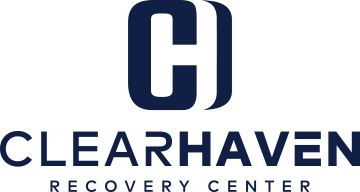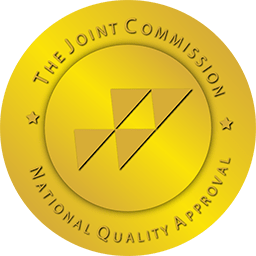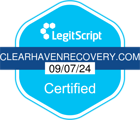Addiction is a disease that affects millions of people worldwide. It is a chronic and often relapsing condition that can cause significant harm to an individual’s physical, mental, and emotional health. Addiction can be caused by a variety of factors, including genetics, environment, and behavior. It is a complex and challenging condition that can leave individuals feeling helpless and hopeless. Many people who struggle with addiction experience a cycle of relapse, where they try to quit using drugs or alcohol but ultimately return to their substance abuse. Breaking this cycle is essential for long-term recovery, and medication-assisted treatment (MAT) has become a powerful tool in the fight against addiction.
Understanding addiction and the cycle of relapse
Addiction is a chronic disease that rewires the brain’s reward system, making it difficult for individuals to control their drug or alcohol use. Addiction can cause changes in brain chemistry, leading to cravings and compulsive drug-seeking behavior. Individuals who struggle with addiction often experience a cycle of relapse, where they try to quit using drugs or alcohol but ultimately return to their substance abuse. This cycle can be frustrating and demoralizing, making it challenging to maintain long-term recovery.
The cycle of relapse typically starts with a trigger, which can be a person, place, or thing that reminds the individual of their drug or alcohol use. The trigger can cause intense cravings and lead to drug-seeking behavior. Once the individual uses drugs or alcohol again, they experience a temporary relief from their cravings and negative feelings, leading to a sense of euphoria. However, this feeling is short-lived, and the individual soon experiences negative consequences, such as guilt, shame, and physical discomfort. These negative consequences can lead to a decreased sense of self-worth and increased feelings of hopelessness, making it even more challenging to maintain sobriety.
Breaking the cycle of relapse is essential for long-term addiction recovery. Medication-assisted treatment (MAT) is a powerful tool that can help individuals overcome addiction by reducing cravings and withdrawal symptoms, increasing the chances of long-term recovery.
What is medication-assisted treatment (MAT)?
Medication-assisted treatment (MAT) is a comprehensive approach to addiction treatment that combines medication, therapy, and support. MAT is used to treat addiction to opioids, alcohol, and other drugs. The goal of MAT is to reduce cravings and withdrawal symptoms, making it easier for individuals to maintain sobriety.
MAT works by using medications that target specific receptors in the brain that are responsible for drug cravings and withdrawal symptoms. These medications can help reduce cravings and withdrawal symptoms, making it easier for individuals to maintain sobriety. MAT is often used in combination with therapy and counseling to address the underlying causes of addiction and provide support throughout the recovery process.
MAT is not a one-size-fits-all approach to addiction treatment. The medications used in MAT are tailored to the individual’s specific needs and addiction history. MAT is also not a cure for addiction, but rather a tool that can help individuals manage their addiction and maintain sobriety.
The benefits of MAT in addiction treatment
MAT has been proven to be an effective tool in the treatment of addiction. Studies have shown that MAT can reduce drug use, increase retention in treatment, and improve overall health outcomes. MAT can also reduce the risk of overdose and other negative consequences associated with drug use.
MAT is also an essential tool in breaking the cycle of relapse. By reducing cravings and withdrawal symptoms, MAT can help individuals maintain sobriety, reducing the risk of relapse. MAT can also help individuals address the underlying causes of their addiction, providing support and resources throughout the recovery process.
MAT is not just effective in treating addiction to opioids and alcohol. It can also be used to treat addiction to other drugs, such as cocaine and methamphetamine. MAT is a comprehensive approach to addiction treatment that can be tailored to the individual’s specific needs, providing a personalized approach to recovery.
The different types of medication used in MAT
There are several medications used in MAT to treat addiction to opioids, alcohol, and other drugs. The medications used in MAT can be divided into two categories: agonists and antagonists.
Agonists are medications that activate the same receptors in the brain that are activated by drugs of abuse. Agonists can reduce cravings and withdrawal symptoms, making it easier for individuals to maintain sobriety. Methadone, buprenorphine, and naltrexone are examples of agonists used in MAT.
Antagonists are medications that block the effects of drugs of abuse. Antagonists can prevent individuals from experiencing the euphoric effects of drugs of abuse, reducing the risk of relapse. Naltrexone is an example of an antagonist used in MAT.
The type of medication used in MAT is tailored to the individual’s specific needs and addiction history. The choice of medication will depend on the type of drug the individual is addicted to, the severity of their addiction, and other factors.
How MAT works in combination with therapy and counseling
MAT is often used in combination with therapy and counseling to address the underlying causes of addiction and provide support throughout the recovery process. Therapy and counseling can help individuals develop coping skills, manage stress, and address the emotional and psychological issues that contribute to their addiction.
MAT can also help individuals stay engaged in treatment, reducing the risk of relapse. By reducing cravings and withdrawal symptoms, MAT can make it easier for individuals to participate in therapy and counseling, improving the effectiveness of treatment.
MAT is a comprehensive approach to addiction treatment that addresses the physical, emotional, and psychological aspects of addiction. By combining medication with therapy and counseling, MAT provides a personalized approach to addiction treatment that can help individuals achieve long-term recovery.
Success rates and testimonials of MAT in addiction recovery
MAT has been proven to be an effective tool in the treatment of addiction. Studies have shown that MAT can reduce drug use, increase retention in treatment, and improve overall health outcomes. MAT can also reduce the risk of overdose and other negative consequences associated with drug use.
MAT has also received positive testimonials from individuals who have used it to overcome addiction. Many individuals report that MAT has helped them maintain sobriety, reduce cravings, and improve their overall quality of life. MAT has also helped individuals address the underlying causes of their addiction, providing support and resources throughout the recovery process.
Misconceptions and criticisms of MAT
MAT is not without its criticisms and misconceptions. Some individuals believe that MAT is simply replacing one addiction with another. However, this is not the case. MAT is a comprehensive approach to addiction treatment that uses medication to reduce cravings and withdrawal symptoms, making it easier for individuals to maintain sobriety. MAT is not a cure for addiction, but rather a tool that can help individuals manage their addiction and maintain sobriety.
Another misconception about MAT is that it is only effective for certain types of addiction, such as addiction to opioids. However, MAT can be used to treat addiction to a variety of drugs, including alcohol and other drugs.
The availability and accessibility of MAT
MAT is available in a variety of settings, including outpatient clinics, residential treatment centers, and hospitals. MAT is also covered by most insurance plans, making it an accessible option for individuals seeking addiction treatment.
However, despite its effectiveness and accessibility, MAT is still underutilized in the treatment of addiction. Stigma and misconceptions surrounding MAT can make it challenging for individuals to access this life-saving treatment. Education and awareness about the benefits of MAT are crucial in breaking down these barriers and increasing access to addiction treatment.
How to get started with MAT
If you or a loved one is struggling with addiction, MAT may be an effective tool in the journey towards recovery. The first step in accessing MAT is to talk to a healthcare provider or addiction specialist. They can provide information about the different medications used in MAT and help determine if it is a suitable option for you.
Once you have decided to pursue MAT, you will need to find a healthcare provider or clinic that offers this treatment. Your healthcare provider can provide a referral or help you find a clinic in your area that offers MAT.
Conclusion
Addiction is a complex and challenging disease that affects millions of people worldwide. Breaking the cycle of addiction can be a difficult process, but with the help of medication-assisted treatment (MAT), it is possible to achieve long-term recovery. MAT is a comprehensive approach to addiction treatment that combines medication, therapy, and support to reduce cravings and withdrawal symptoms, making it easier for individuals to maintain sobriety. MAT has been proven to be an effective tool in the treatment of addiction, and it is available and accessible to individuals seeking addiction treatment. By understanding the benefits of MAT and how it works, individuals and their loved ones can take an important step towards breaking the cycle of addiction.
Are you ready to start your recovery? Our counselors are available 24 hours a day. Call 833.970.2054.











